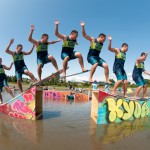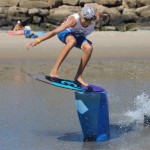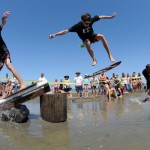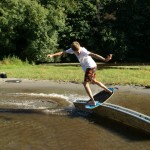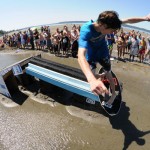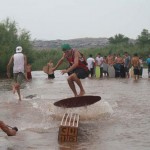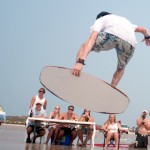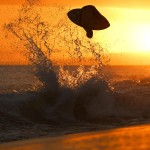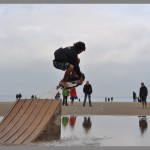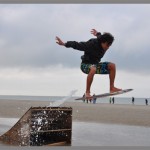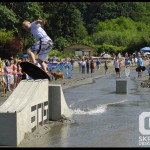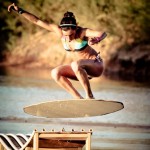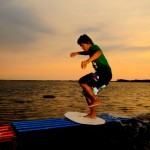There are several ways in which a skimboard can be ridden: either gliding over a layer of water or wet sand towards a wave, or riding in shallow water away from the ocean (known asflatlandor inland skimming. Most flatland skimboarding takes place at rivers).
Wave riding is considered more advanced than flatland skimboarding, though flatland skimboarding has become more and more popular and taxingly difficult over the years as more advanced rails, ramps and technical tricks have become the norm. All skimboarders start by learning how to throw the board and run onto it while it is gliding across a thin layer of water. After beginners have mastered the basic techniques properly they can move to more complicated tricks, or riding waves, grinding rails, or otherskateboardingmaneuvers. Sand skimboarding is considered to be a beginner’s sport due to the relative lack of difficulty when compared to skimming on waves in hotspots such as Aliso Beach. Nevertheless, some flatland skimmers are able to perform tricks of great technical skill, many adapted fromskateboarding, such as grinding rails.
Advanced skimboarders are able to do much more impressive tricks on their boards. The most common advanced move is called a Wrap. When the skimmer reaches the wave, by shifting his or her weight the skimmer can wrap around it, which also propels him or her back to shore. To take it further, a very advanced move is called the Wrap Barrel. This is when you wrap the wave, but instead of coming directly back to shore, you turn farther and get into the barrel of the wave.
A technique often used to reach hard-to-reach waves is side-slipping. It involves doing the normal one-step but once the rider has landed on the board, they turn the board sideways and crouch into balance, approaching the wave rail-first. This technique allows for the rider to have less surface friction which allows the rider to maintain a faster speed unlike the traditional way of going straight out into the on-coming wave. Another technique involves pumping the board both leading to and once on a wave to maintain speed.

